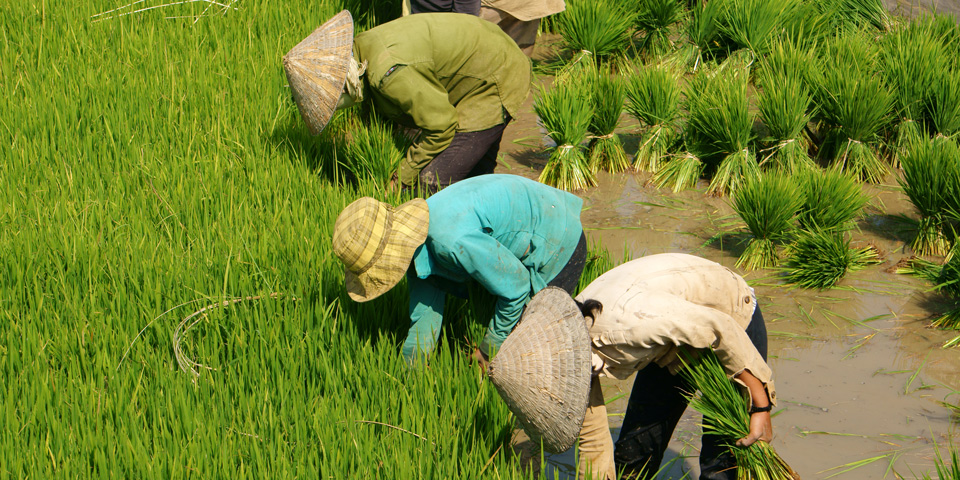
“Many issues” remain unresolved, points out commentary in Nature journal
A new GM rice is being touted as climate change-friendly because in cultivation it produces less methane, a powerful greenhouse gas, than normal rice.
One article says, “All it took was a gene from barley that was inserted into the Nipponbare rice to cut methane emission to 0.3% compared to 10% in control plants.”
The new GM rice produces grains with a high starch content by diverting more carbon (derived from photosynthesis) into grains and stems, and less into roots. This results in less carbon being put into the soil by the plants and thus being available to the decomposer microorganisms that supply carbon to methane-producing microbes. These effects combine to reduce methane emissions from areas planted with this rice strain.
The study announcing the discovery is published in the journal Nature.
However, a balanced commentary in Nature about the discovery shows that this GM rice is a long way from making any contribution to alleviating climate change or even to sustainable agriculture in general.
The author, Paul L. E. Bodelier of the Netherlands Institute of Ecology, points out that “many issues” remain unresolved. For example, because the rice is GM, “In addition to the general questions surrounding the use of genetically modified crops for human consumption, and how access to seed for such crops is controlled, we do not yet have a clear picture of how this modification affects rice plants’ survival and general function.”
Bodelier says that long-term and frequent measurements of methane emissions from areas planted with normal and transgenic rice are needed to estimate what the annual global effect of the widespread use of this crop would be, and how it compares with that of other methane-mitigation strategies.
Even more important, he says, will be assessment of the long-term consequences of lower carbon and oxygen input by the roots of the GM rice plants on soil processes and the microbes that carry them out.
Other research has shown that specific assemblages of microbial species occur in and around rice roots, and not all of them use plant-exuded carbon. Bodelier warns, “Long-term reduction of root-exuded carbon might alter the composition of these communities, with unknown consequences for microbes that are plant pathogens or that benefit the plants, such as the bacteria that decompose organic material and deliver essential plant nutrients.”
If there were a reduction in plant nutrients, Bodelier says, “larger amounts of nitrogen fertilizer would need to be applied”. This, he adds, could affect both methane-producing and methane-consuming microbes and could even lead to undesirable environmental effects such as nitrate leaching into groundwater and emissions of the potent greenhouse gas nitrogen oxide.
Thus, Bodelier concludes, translocating more carbon to the stems and seeds of this GM rice “may bypass methane cycling, but this activity has the potential to affect a multitude of processes involving soil carbon, nutrients and microbial activity, with knock-on effects for the sustainability of rice cultivation.”
It’s good to see critical commentary on a new GMO that takes a relatively broad and holistic view of ecosystems, as compared with the usual narrow focus on the performance of the intended GM trait.
—
The study:
Expression of barley SUSIBA2 transcription factor yields high-starch low-methane rice
J. Su, C. Hu, X. Yan, Y. Jin, Z. Chen, Q. Guan, Y. Wang, D. Zhong, C. Jansson, F. Wang, A. Schnürer & C. Sun
Nature (2015)
doi:10.1038/nature14673
Published online 22 July 2015
http://www.nature.com/nature/journal/vaop/ncurrent/full/nature14673.html










